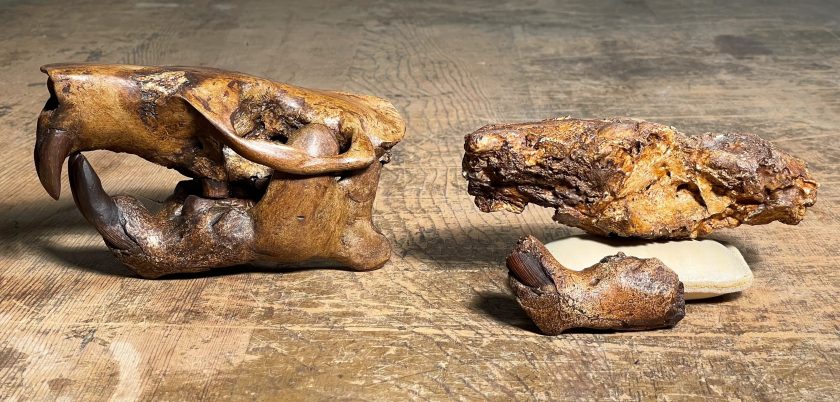Ancient Buc-ee Beaver
October 16, 2023

The most famous beaver in Texas has made it into the fossil record, thanks to scientists at the Jackson School of Geosciences.
The scientists discovered a new species of prehistoric beaver in the school’s fossil collections and named it after Buc-ee’s, a Texas- based chain of popular travel centers known for its cartoon beaver mascot. The fossil beaver is called Anchitheriomys buceei, or A. buceei for short.
Steve May, a research associate in the Department of Earth and Planetary Sciences, said that the beaver’s Texas connection and a chance encounter with a Buc-ee’s billboard inspired the name.
May is the lead author of the paper that describes A. buceei, along with another, much smaller, species of fossil beaver. Published in the journal Palaeontologia Electronica, the paper provides an overview of beaver occurrences along the Texas Gulf Coast from 15 million to 22 million years ago based on bones and archival records in the Jackson School collections.
While driving down a highway in 2020, May spotted a Buc-ee’s billboard that said “This is Beaver Country.” The phrase brought to mind the Texas beaver fossils he had been studying.
“I thought, ‘Yeah, it is beaver country, and it has been for millions of years,’” May said.
A buceei lived in Texas about 15 million years ago. Aside from being about 30% larger, it probably resembled modern beavers, according to Matthew Brown, the director of the Jackson School’s vertebrate paleontology collections.
Back to the Geoscientist